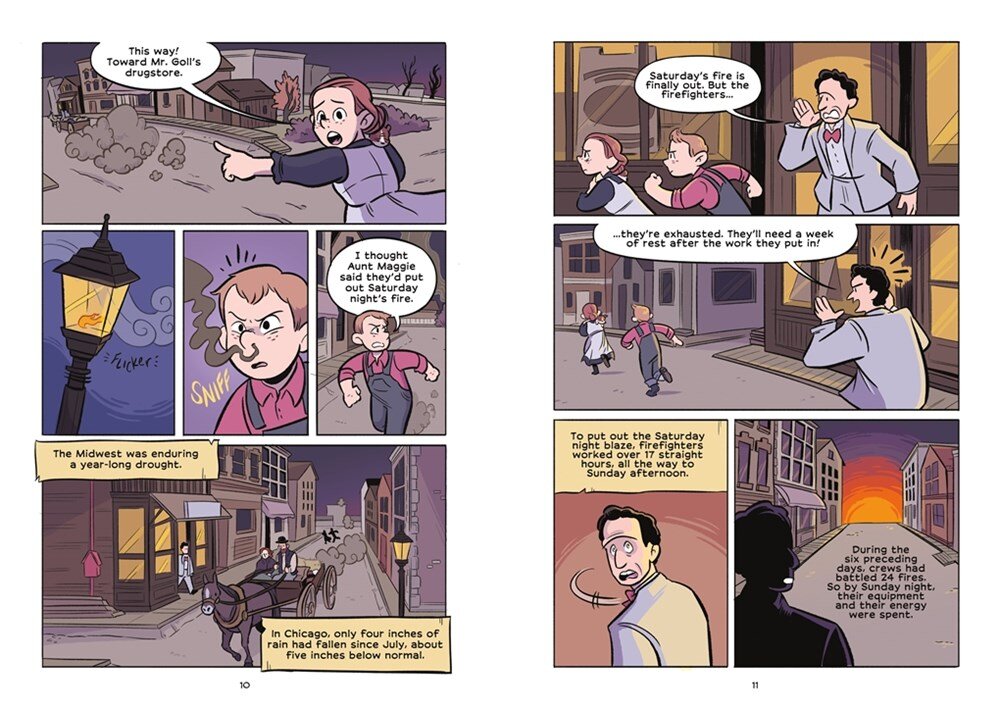The Great Chicago Fire: Rising From the Ashes (History Comics)
by Kate Hannigan, Illustrated by Alexandra Graudins
First Second (June 30, 2020)
Nonfiction * History * Comics
Audience: Ages 9 to 12
Indiebound | WorldCat
Description from GoodReads:
With History Comics you can travel back in time to the launchpad at Cape Canaveral, the deserts of the American southwest, the riot at the Stonewall Inn, and beyond! In this new nonfiction graphic novel series from First Second, the past comes alive!
In this volume, a deadly blaze engulfs Chicago for two terrifying days! A brother, a sister, and a helpless puupy must race through the city to stay one step ahead of the devilish inferno. But can they reunite with their lost family before it’s too late? With History Comics: The Great Chicago Fire, you'll learn how a city rose up from one of the worst catastrophes in American history, and how this disaster forever changed how homes, buildings, and communities are constructed.
Quicks thoughts on the book:
Ahh! Where is the line between historical fiction and nonfiction? Or Informational fiction and Nonfiction? These are questions that pop, especially when reading graphic or illustrated books. And kept nagging me as I was reading The Great Chicago Fire (History Comics) by Kate Hannigan and illustrated by Alex Graudin.
I have been a big fan of First Second’s Science Comics and was excited to see that there would be a series of history comics being released. As I read through the story, I learned a lot about the facts that led up to the Chicago Fire of 1871 and the evolvement of Chicago into a thriving city as change came to the city. Hannigan doesn’t shy away from acknowledging and pointing out the bias towards the immigrant communities, particularly the Irish during this period of time. Hannigan, also, explores multiple possibilities for how the fire began that October evening. Like many people I assumed that Mrs. O’Leary and her cow had started the fire that fatal night, only to learn that she was cleared of this accusation in 1997.
Though the addition of Franny and her brother, JP, and a very small pup named Lucky provides the book with a narrator for the events of the night and following days, I had to assume that they were fictional. I am excited to share this new graphic novel with students and think there can be many conversations about how Hannigan clearly identifies factual information while also using fictional elements. This is an especially important skill for children to develop when reading informational texts.
At the end of the book, back matter includes an author’s note, timeline, fast facts, places to visit and bibliography & resources.
And during this time of #stayhomestaysafe, consider supporting your local indie bookstores .
Don’t forget to link up your nonfiction reviews…




